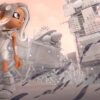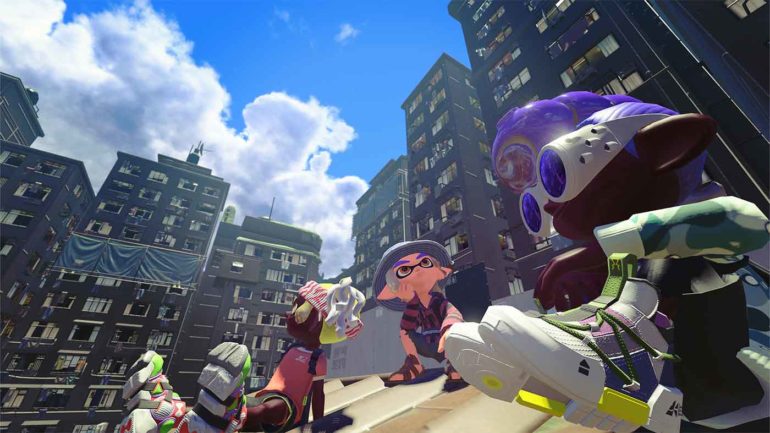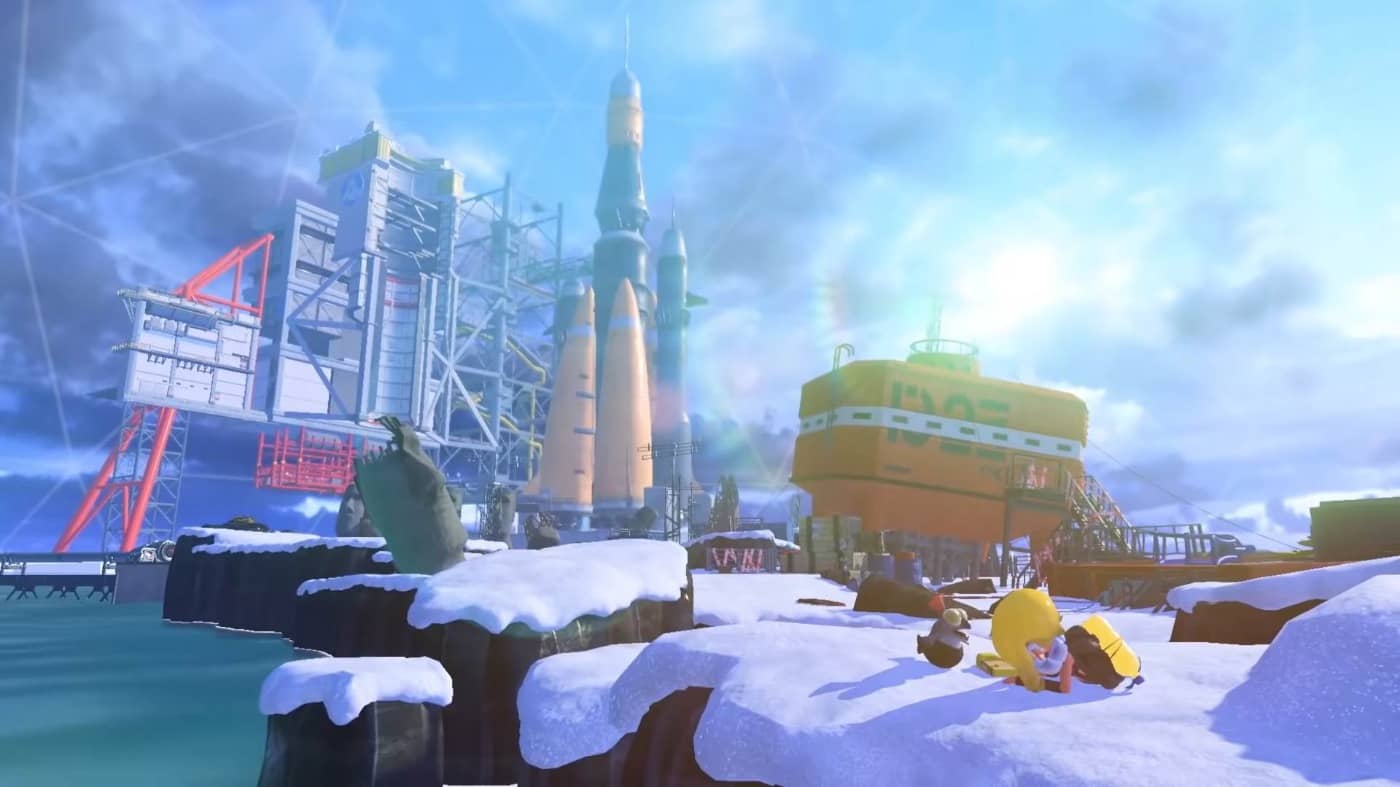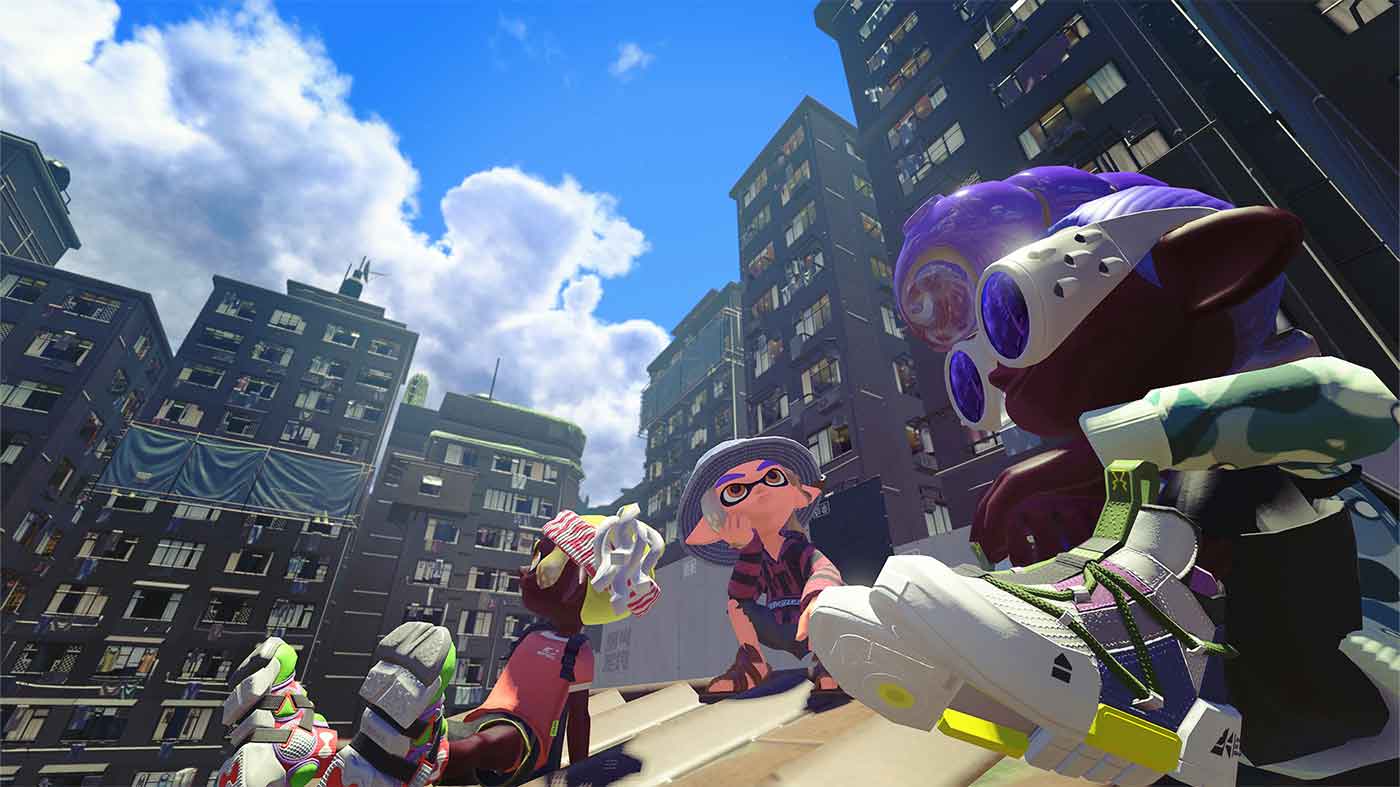2017’s Splatoon 2 was a pivotal moment for one of Nintendo’s newest IP. Where the first game was a strong proof-of-concept with a dedicated player base, the hit sequel doubled down on everything that made the first game so great, with an excellent campaign and wave-based survival mode to boot.
If Splatoon 2 was the franchise finding its footing and evolving the core concept, Splatoon 3 is a more iterative and focused entry into the series. Opting to refine and hone the elements introduced in 2 to a fine polish. The end result is a game that isn’t the same radical step forward as its predecessor, yet delivers the most addictive and refined splatting experience thus far.
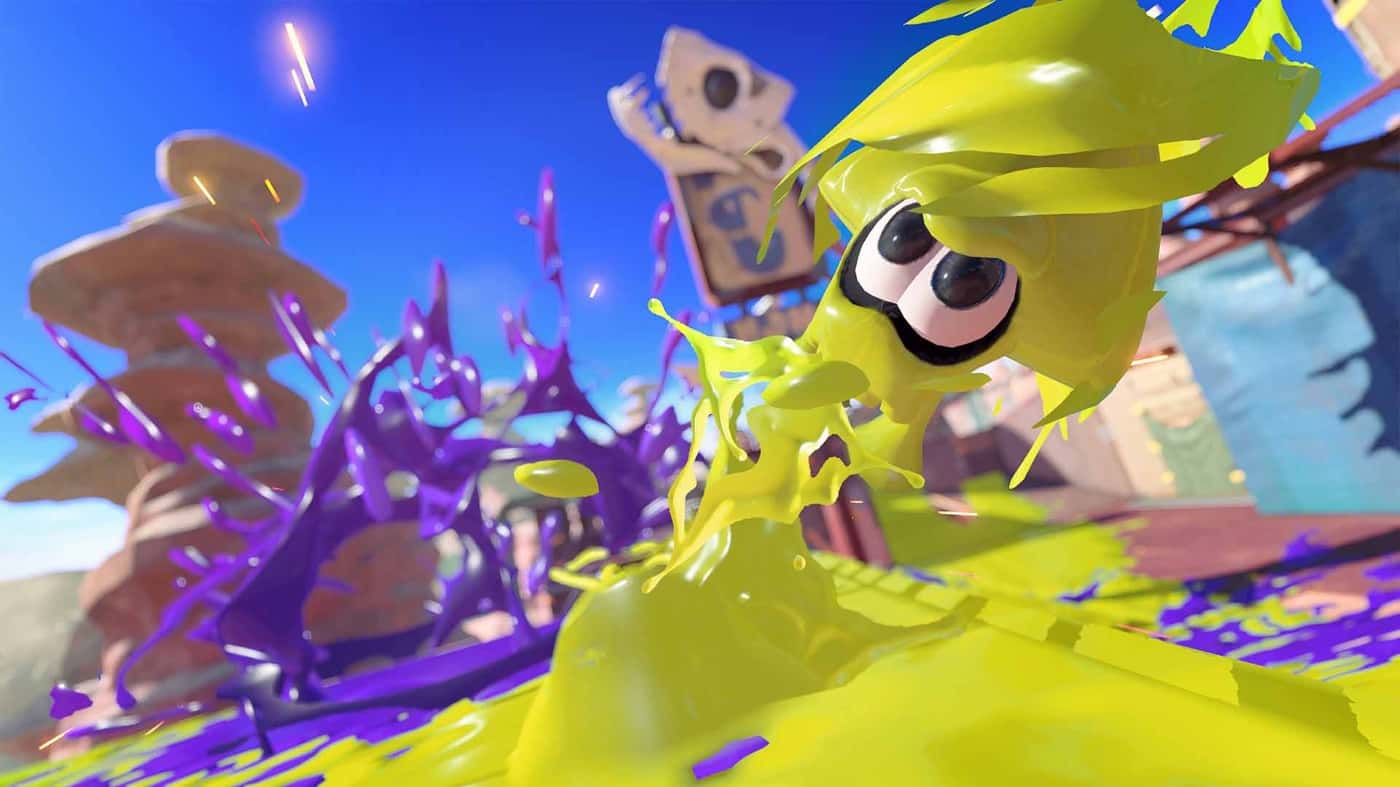
Splatoon 2’s campaign was arguably the best new inclusion in comparison to the first game, with laser-focused level design that introduces new mechanics and ideas and tossing them away before they get boring. The trend was continued and further bolstered by the Octo Expansion, so it only makes sense that Splatoon 3 would set out to reach similar heights with its own single-player experience – Return of the Mammalians.
Return of the Mammalians is an engaging hybrid of Splatoon 2’s campaign, and the Octo Expansion. Short and sweet levels that push the core idea of Splatoon to its limits, and it does so with resounding success. After creating your Inkling or Octoling who’s brand new to the Splatlands, you’ll find yourself lost in a world called Alterna, as you seek out Splatsville’s kidnapped Great Zapfish.
Things aren’t as they should be, though, the Octarians have returned, mutated with brown fur and purple eyes. Fuzzy Ooze coats the landscape of Alterna, and it falls to you, Agent 3, to find out the truth behind Alterna and the rampant fuzz. The truth is slowly revealed as you progress through the six zones of Alterna, unlocking logs that slowly peel back the layers that shroud the truth.
THE CHEAPEST PRICE: $69 WITH FREE SHIPPING.
It’s a relatively straightforward and simple narrative with an endearing cast of new and old characters. What was most surprising to me came in the form of the Alterna Logs, which are deciphered as you complete levels in each zone. Without spoiling too much, I suspect that hardcore Splatoon fans will get a real kick out of what’s explored in these, and clearing each zone was made more exciting by the prospect of new information.

In gameplay, Alterna serves as a sort of hub world for the numerous levels you’ll play across the 5-6 hour campaign. Much like the Octo Expansion, a vast majority of these levels can be completed in any order, and are optional, meaning if a level is proving to be too difficult, you can move forward onto something else. This coupled with the ability to pick from different weapon types at the beginning of each level, means that there’s a degree of flexibility and player choice present within Return of the Mammalians only found in Octo Expansion.
To make up for the non-linear nature of Return of the Mammalians, progression is gated by Fuzzy Ooze that can only be cleared by using a required amount of Power Eggs gained from clearing levels and defeated enemies. This means you’ll have to make smart decisions on what patches of Fuzzy Ooze you want to clear if you want to streamline progression, or look for secrets hidden throughout Alterna. These secrets range from collectibles to items you can use to unlock new skills and abilities to bolster your arsenal in future levels. Things like increasing your ink capacity, movement speed, and more. It adds an extra wrinkle and element of exploration to the hub world that would otherwise simply serve as a place to be as you move between levels.
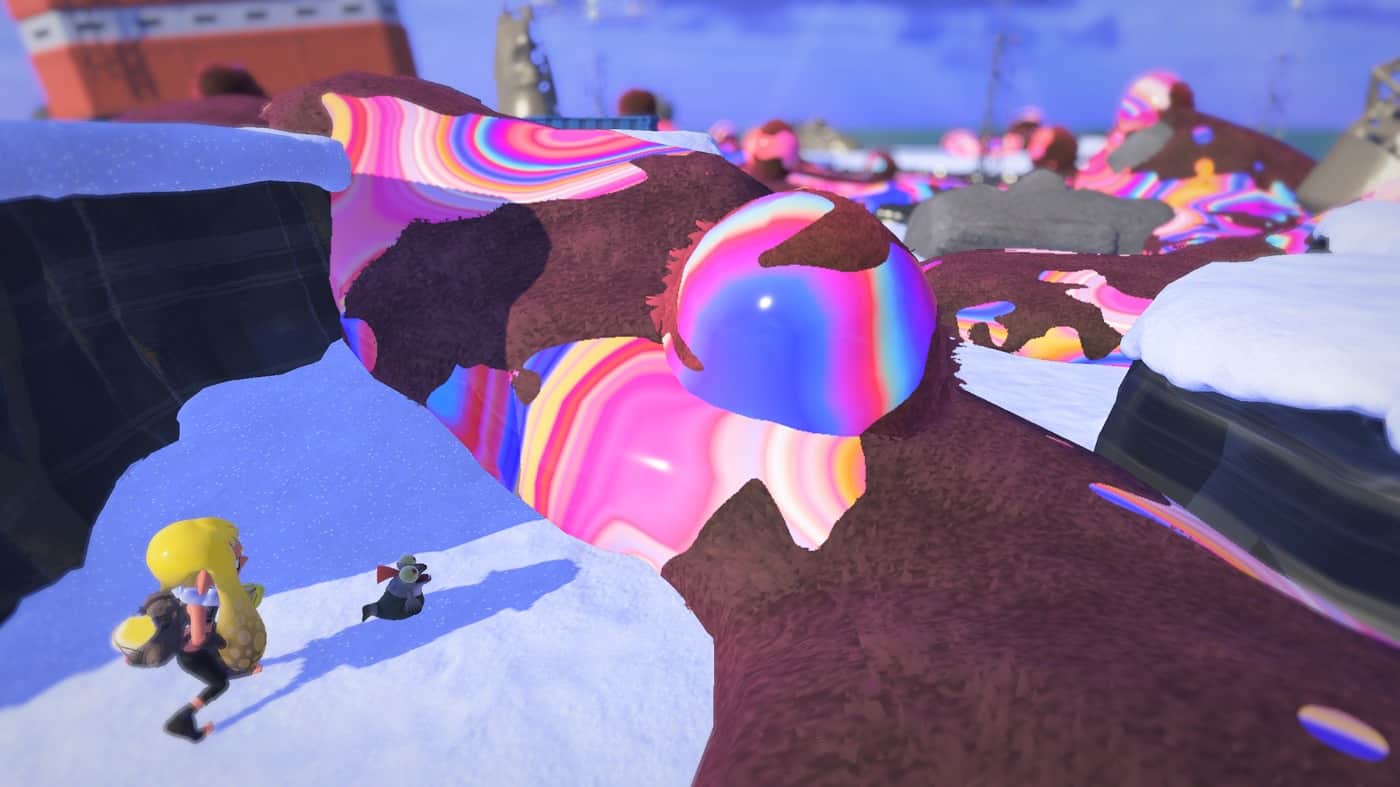
Much like previous entries there’s a strong focus on levels that are unique and distinct from one another, each one focusing on an idea that’s pushed to its extreme and tossed away before it can get boring. It makes for a tightly paced and constantly creative experience that’s punctuated by engaging puzzle-like boss fights.
With the Splatlands being so separated from the rest of squid-kind, all kinds of tools and weapons have been developed. From the brand new melee weapon, the Splatana Wiper that excels at close range, to the Tri-Stringer which effectively functions as a bow with explosive arrows filled with paint. This doesn’t even scratch the service as there’s also a slew of new Specials including the mobile Crab Tank, and the ink-slinging Zipcaster.
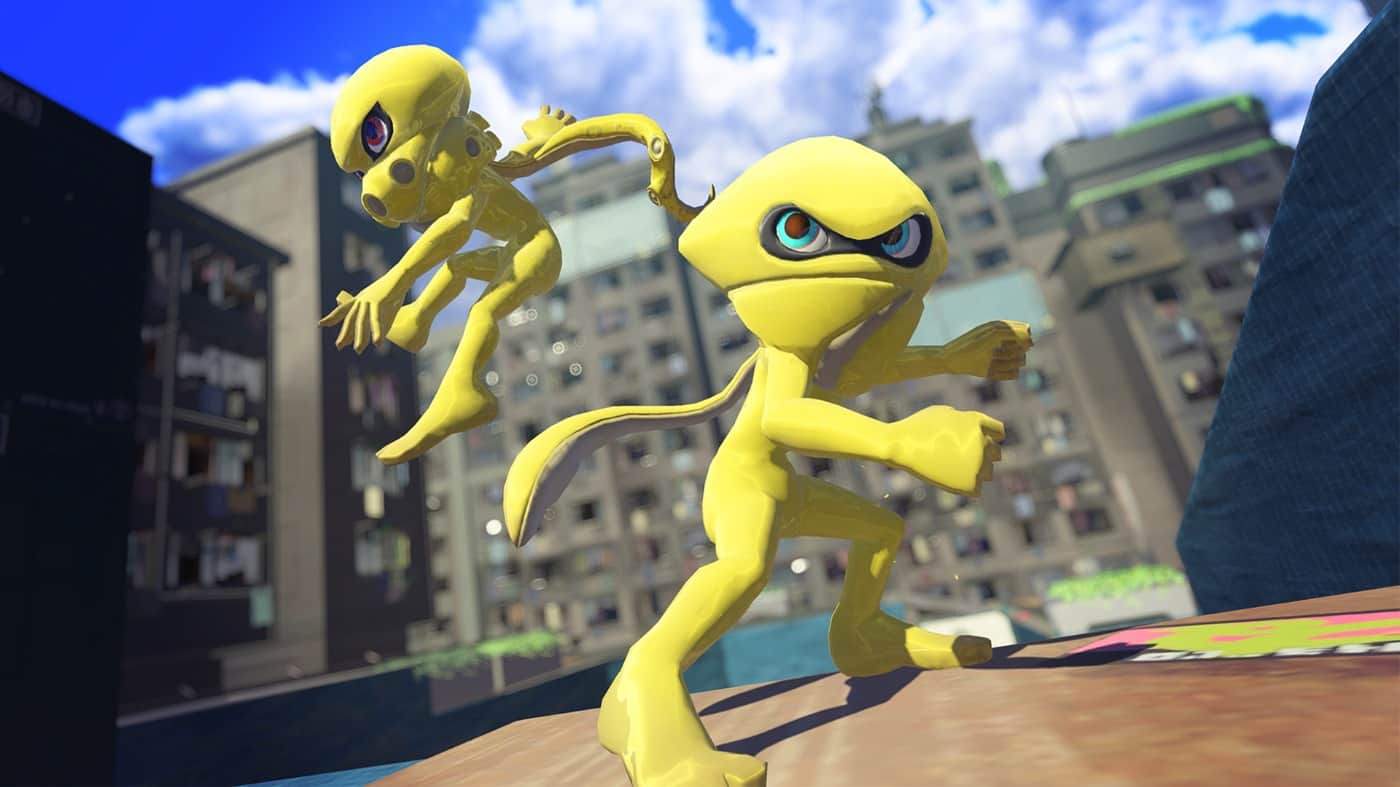
You’re also accompanied by Smallfry, a small salmonid that helps you on your adventures in Alterna. Smallfry can be used to deal damage to enemies, solve puzzles, clear Fuzzy Ooze, and more. It’s a novel concept that feels underutilized for a vast majority of the levels, and only reveals its true potential in the last hour or so. There’s also the Squid Surge and Squid Roll, two movement abilities that encourage you to stay mobile both in multiplayer and throughout Alterna.
Those who’ve played previous entries will feel right at home with Splatoon 3’s suite of multiplayer offerings. Turf War makes a triumphant return with fantastic new and old maps that are ripe for opportunities to use the new movement mechanics, and all other game modes from Splatoon 2 are also reprised here. Although this is a relatively feature complete, and content-rich multiplayer mode, it’s a bit strange that there’s no new game modes present at release, aside from the inclusion of a reworked ranked mode in the form of Anarchy Battles.
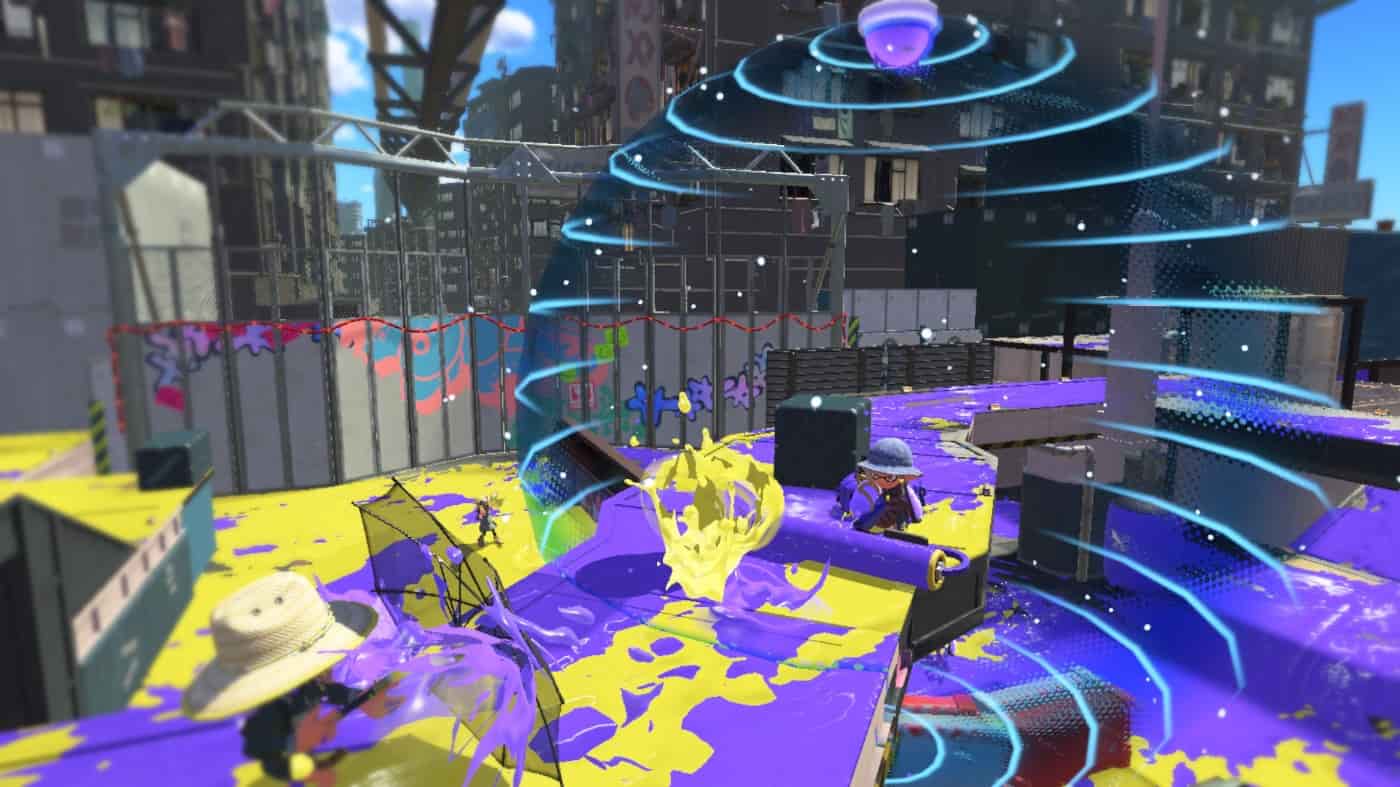
Splatfests also make a return, but come with a rework that freshens up their overall pace and how they function. Splatfests are now split into three teams to choose from, with each battle consisting of 2 halves. The first of which is a 4v4 Turf War, and the second half is a tri-color Turf War, where the 2 losing teams are put up against the winning team as they desperately try to defend their previous victory. It’s a truly hectic and well-rounded experience that stands out even further from the core playlist of game modes, even if it’s sometimes tricky to keep track of.
As always, you can customize the look of your Inkling/Octoling with clothes you can buy and unlock as you play the game. Each one has a small set of skills that enhance certain abilities, incentivizing smart build crafting to suit your playstyle. One new inclusion is the ability to create loadouts for your clothing, making way for an easy method to swap between different kits. You can even visit the returning Murch, to configure abilities even further, making sure that you look stylish first and foremost with abilities that still work for you in combat.
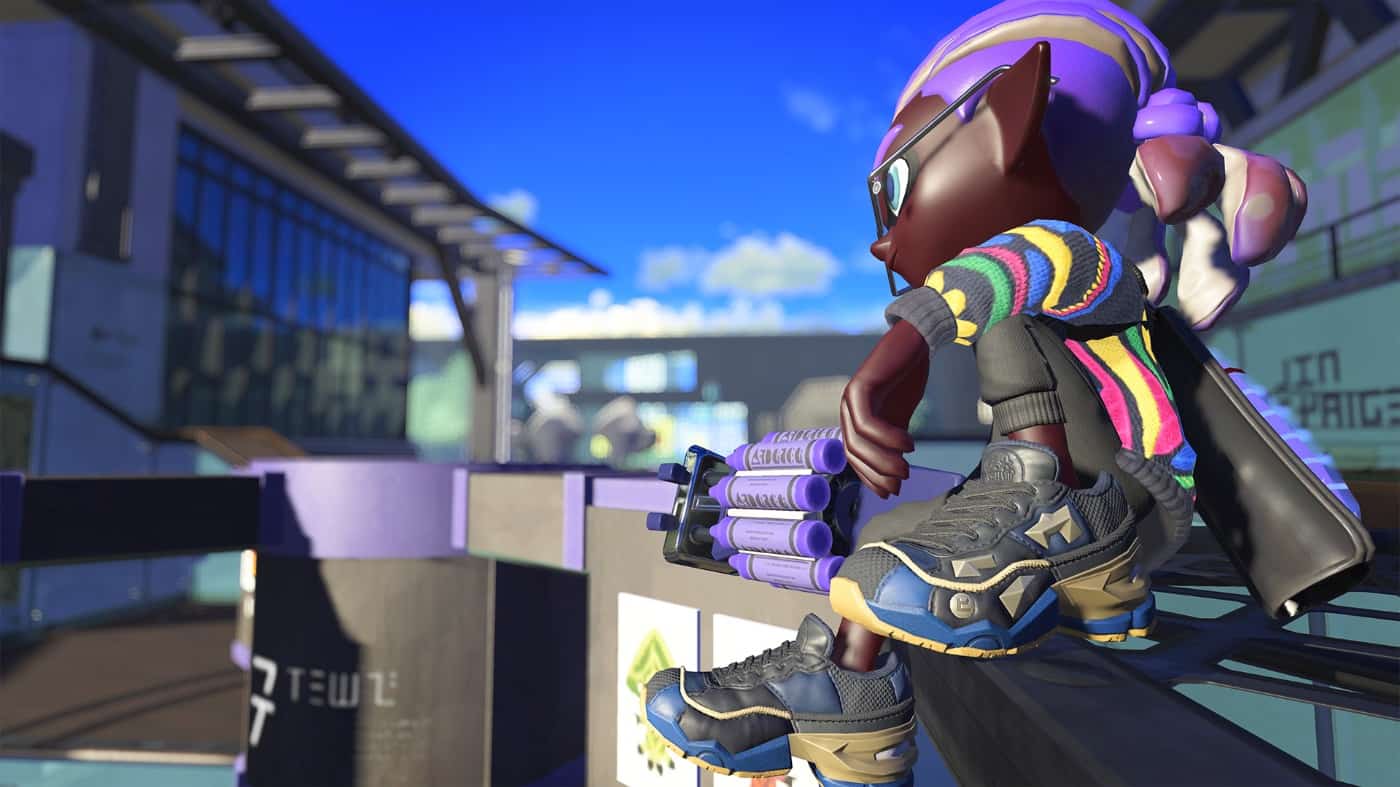
Weapon loadouts are unfortunately no different from previous games, where you’re locked into a certain Special Weapon and Sub Weapon depending on your primary weapon of choice. It’s frustrating to be forced to use a particular Sub Weapon or Special Weapon because you gravitate towards a particular gun. There are multiple variations of core weapon types, meaning there is some flexibility, but the ability to build it all out from scratch is still sorely lacking here.
Salmon Run returns in the form of Salmon Run Next Wave, and is now a permanent part of Splatoon 3, meaning players can jump into the wave-based survival mode at any time. It still invokes the same sense of chaos with 4 players frantically scrambling to deliver enough golden eggs before your shift is up. With the same core gameplay loop and some great new inclusions that really improve the experience, Salmon Run Next Wave is a standout game mode in Splatoon 3.
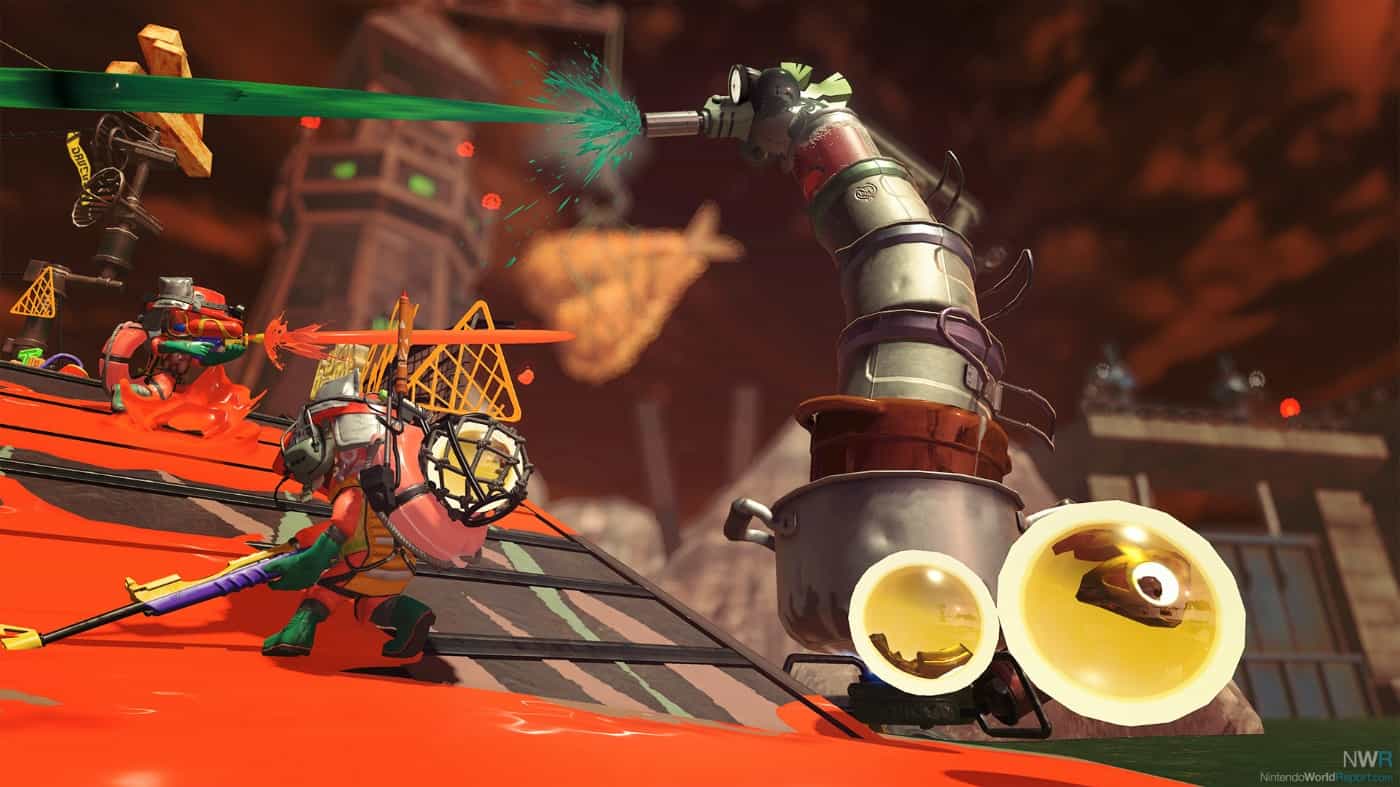
For starters there’s a bunch of new boss Salmonids to contend with, all of which require unique strategies to take down. The Flipper-Flopper, for example, is a dolphin that’ll dive in and out of ink, leaving a small circle of ink on the ground for each new diving spot. Inking the circle will leave the Flipper-Flopper smashing head first into the floor, exposing it to damage. The amount of boss Salmonids thrown at you ensure that you work with your teammates, and stay ever-flexible on the job.
Another small improvement is the ability to throw the all important Golden Eggs, streamlining the experience that little bit further in a great way. You’ll also occasionally come across an extra wave of work where King Salmonid Cohozuna will take to the battlefield, serving as a thrilling final boss fight of sorts before returning to Splatsville. It’s also been announced that there’s going to be Big Run events, where Salmonids overrun Splatsville and need to be fought back. While these are set to happen every few months, we didn’t get to experience it during the review window, but I have no doubt that they’ll be looked forward to in the way Splatfests are.
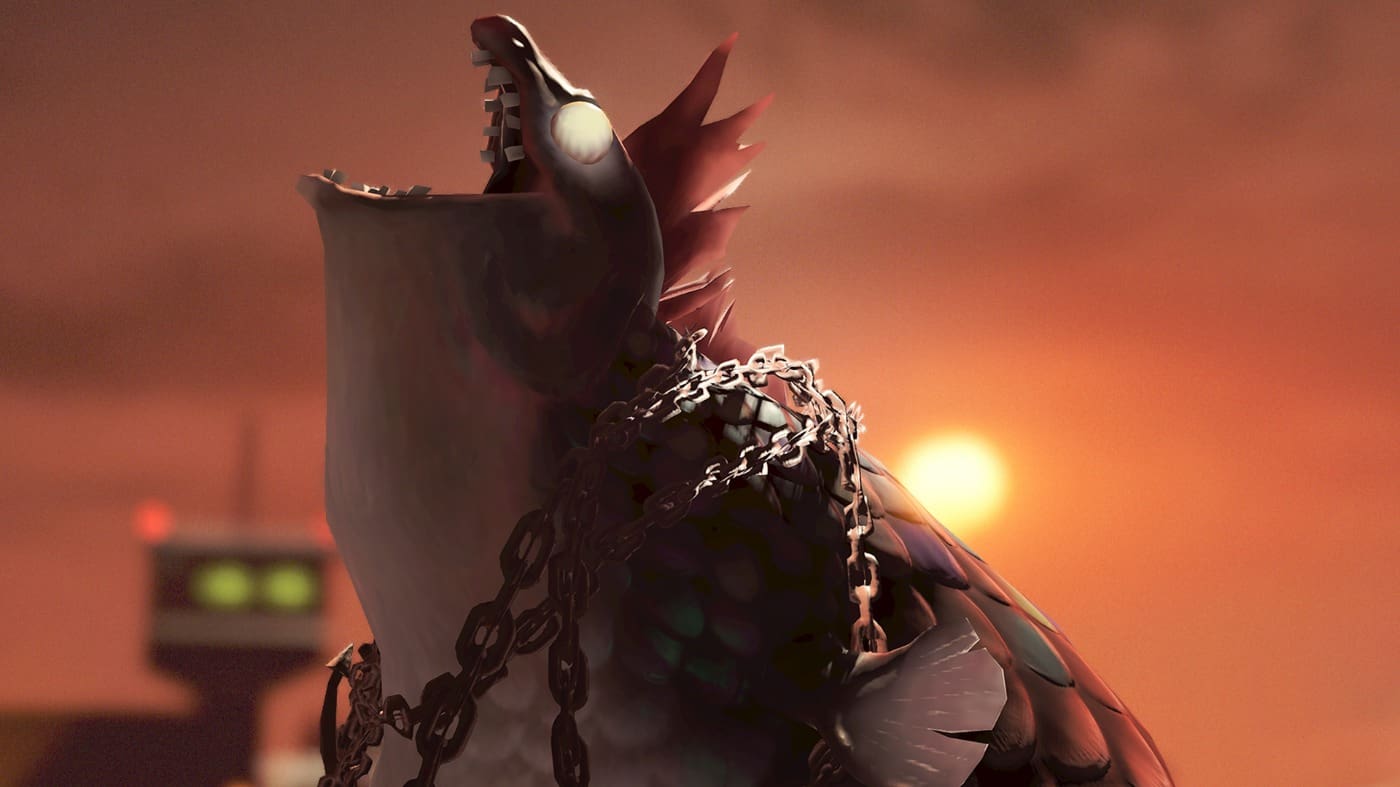
Between game modes, you can spend time exploring Splatsville, messing around with guns in the lobby/Grizzco Break Room, or play Table Turf Battle, an all new card game introduced in Splatoon 3. While not super in-depth, Table Turf Battle is a fun little distraction to play when you need a break from all the splatting. It plays like a table top version of Turf War, where you use cards to take squares on a board. Whoever has the most turf and the end of the game, wins. You’ll collect card packs as you play that’ll expand your deck further, making for a nice extra layer of progression on top of all the multiplayer stuff.
I’m always shocked out how Nintendo are able to wring out every drop of power from the Switch to create a game that both looks and runs beautifully. Splatoon 3 is a real showcase for the OLED, with all the bright neon paint splattered over the terrain and high quality particle effects on show here. That isn’t to say that the game struggles when docked, because it’s similarly remarkable with rock solid performance across all modes. It’s a slick and smooth experience from start to finish, and one so visually appealing that it’s simply too hard to take your eyes off of.

